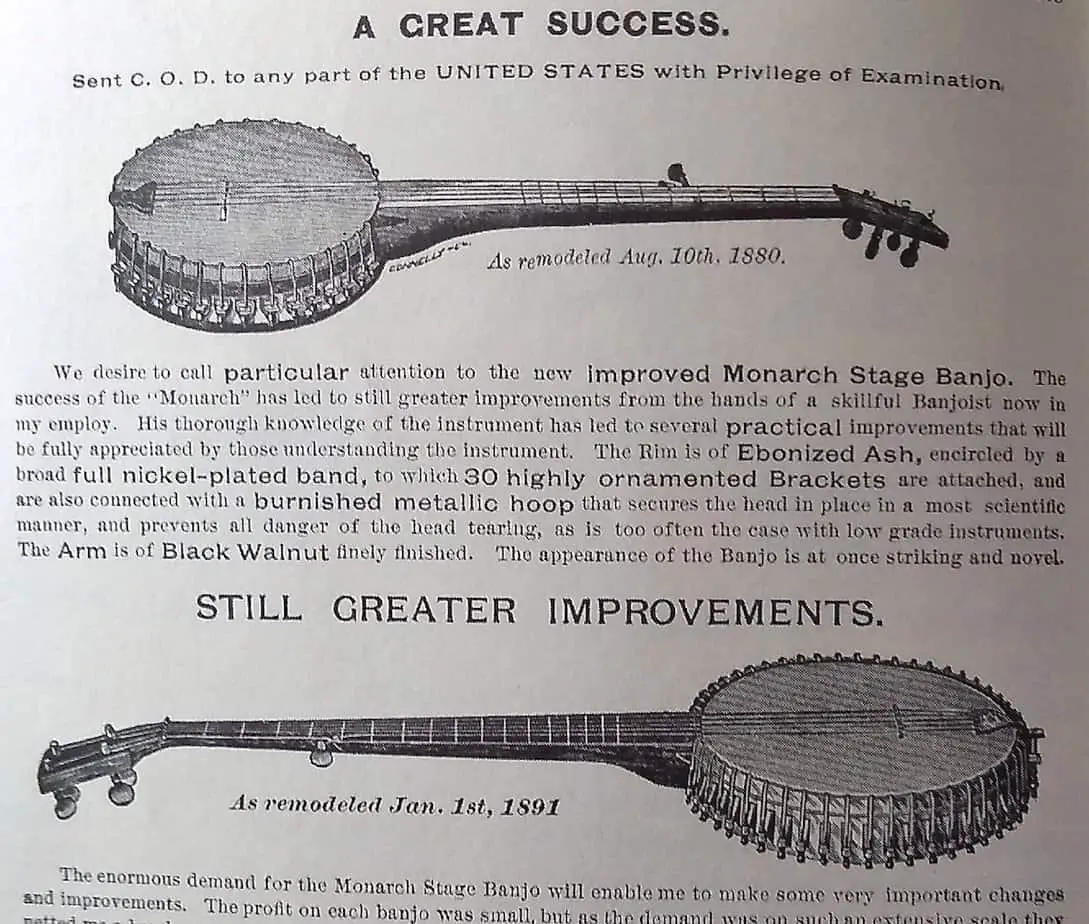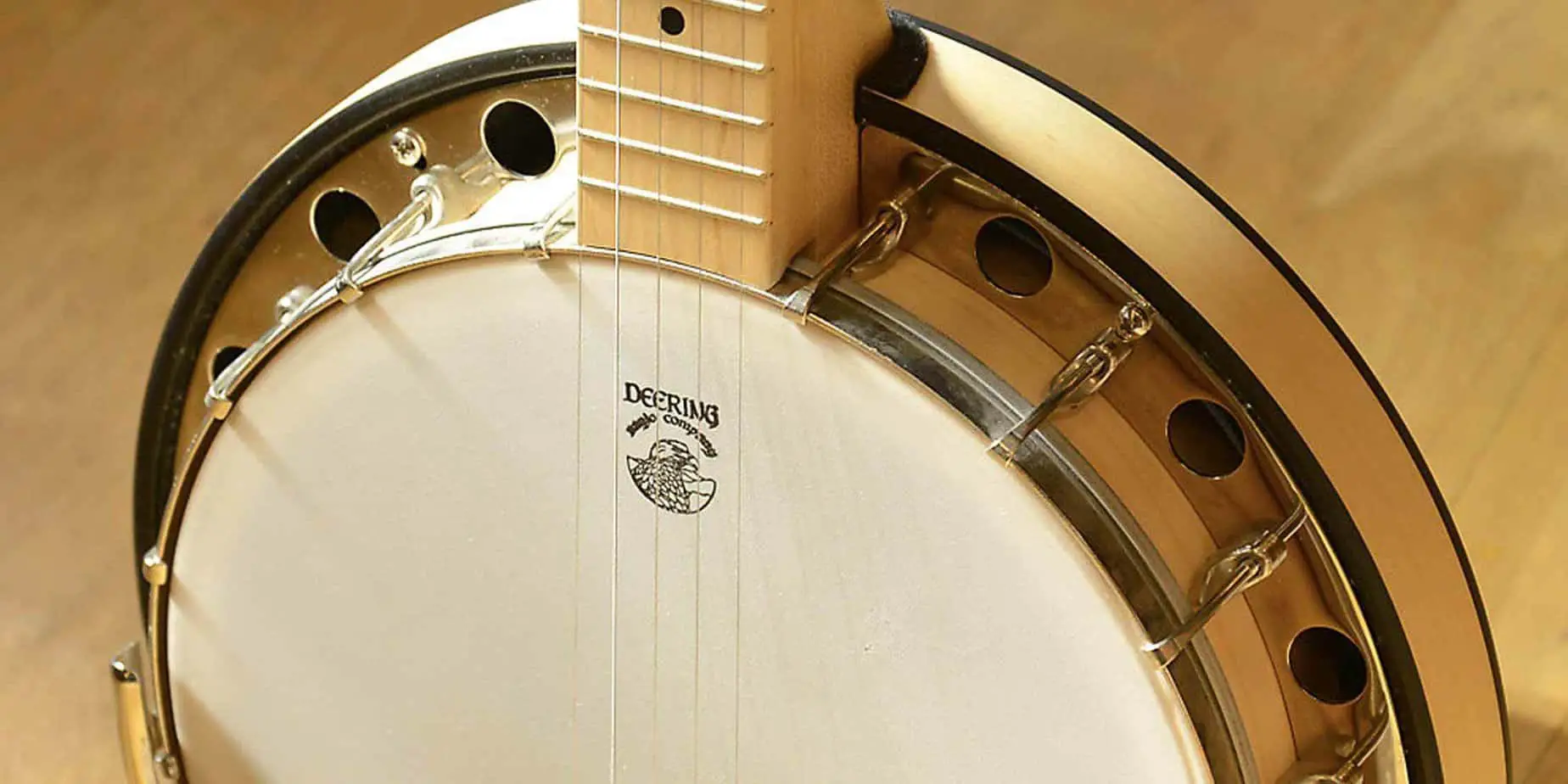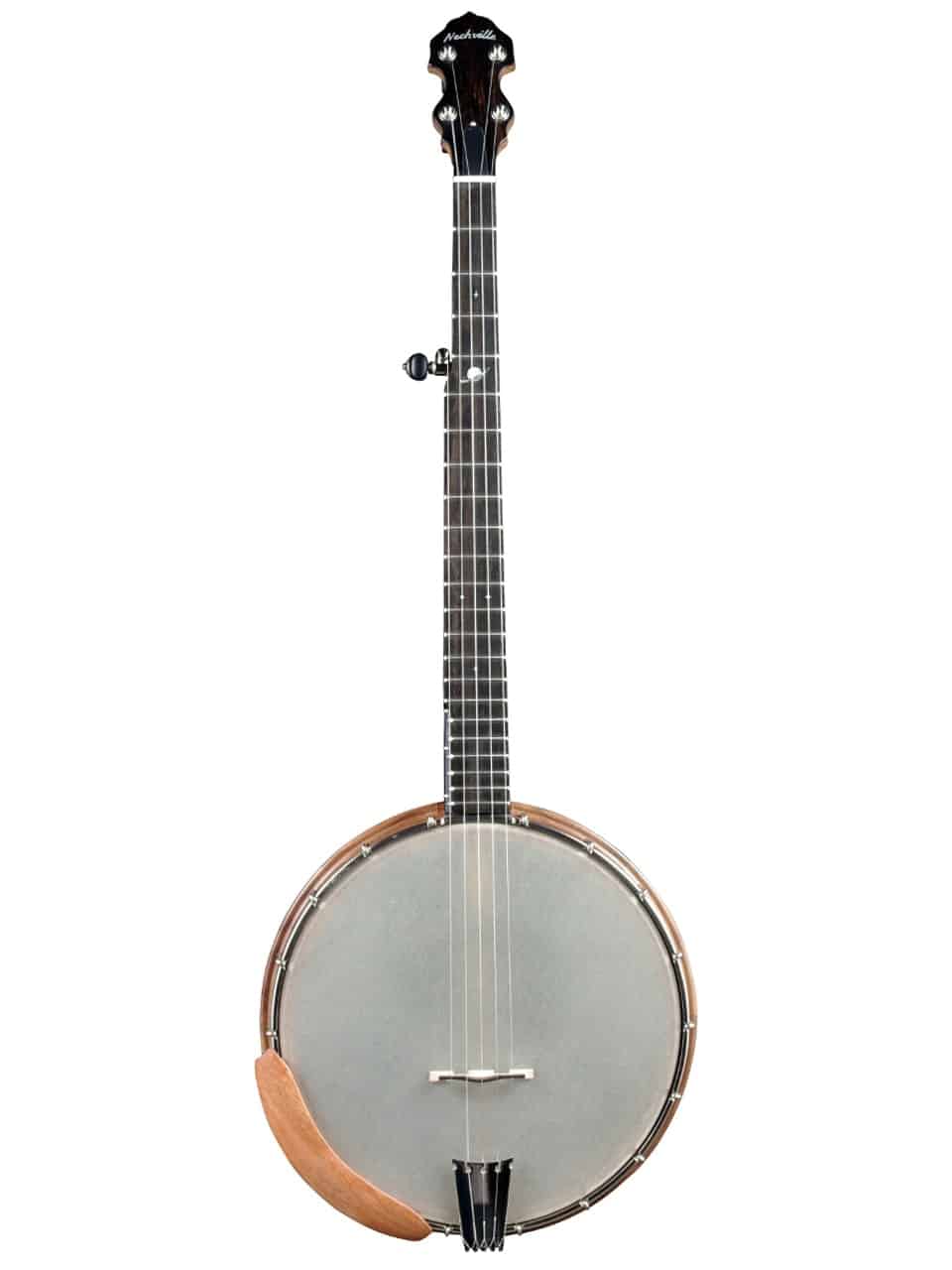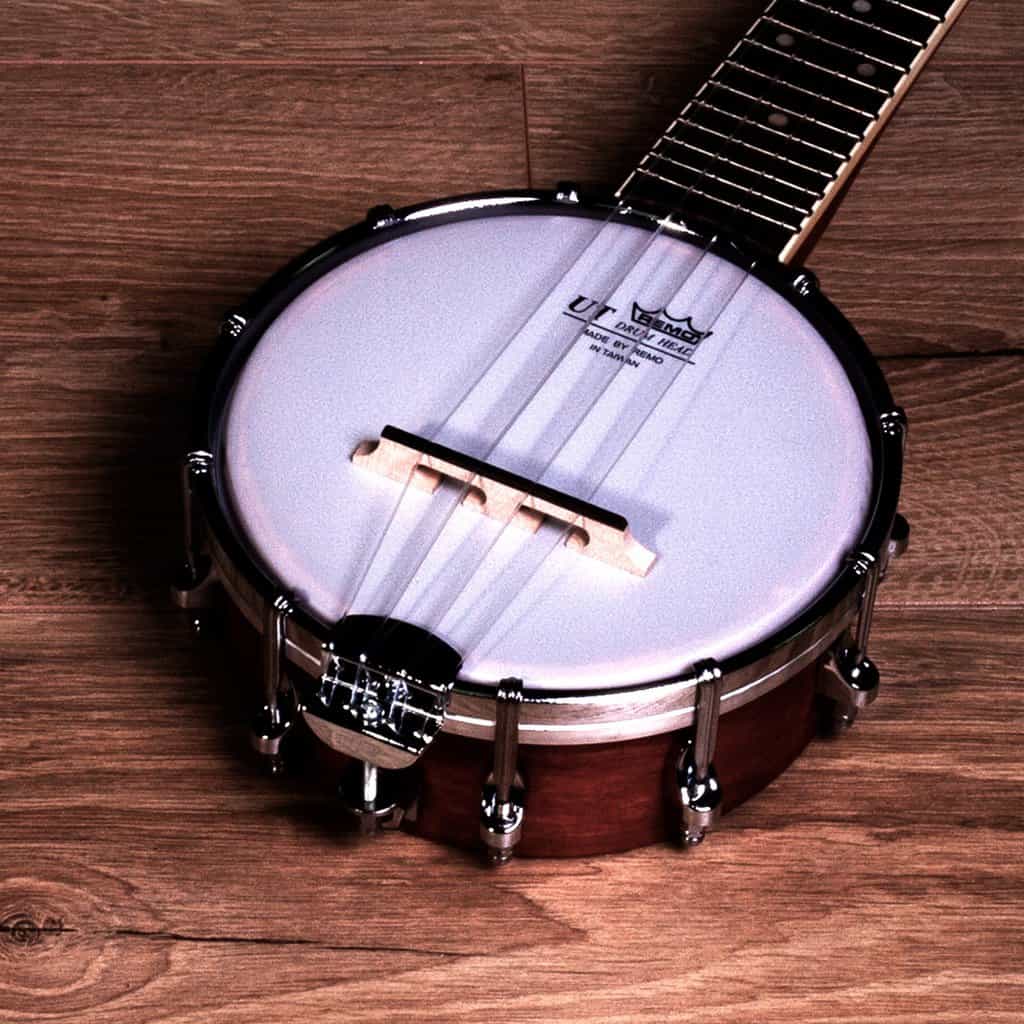As a banjo enthusiast, I’ve often asked myself the question: “where are banjos made?” The banjo is an iconic instrument in folk and country music, with its roots going back hundreds of years. In this article, I’ll uncover the origins of the banjo and explore the various places where banjos are made today. We’ll take a look at the history of the instrument, how it has evolved over time, and how modern banjos are crafted. By the end, you’ll have a better understanding of where banjos come from and how they are made.
History of Banjos
Banjos originated from African string instruments, brought over to America by the slaves. The modern banjo was developed in the 19th century by African American musicians in the Southern United States. It was used to accompany blues, jazz, and country music during the 19th century. During the 20th century, the popularity of the banjo soared, leading to the development of a range of different models, including the resonator banjo, the tenor banjo, and the 5-string banjo. Today, the banjo is associated with bluegrass, folk, and old-time music, and is played by musicians all over the world.
Types of Banjos
Banjos come in a variety of styles, with the most popular being the five-string banjo. Other types include the four-string banjo, six-string banjo, and tenor banjo. The five-string banjo is the most common type, and is typically tuned to an open G chord. The four-string banjo is tuned the same as the five-string, but with the fifth string removed. The six-string and tenor banjos are tuned to a different chord and usually used in jazz and bluegrass music.
Popular Banjo Brands
| Brand | Country of Origin |
|---|---|
| Deering | United States |
| Gold Tone | United States |
| Epiphone | China |
| Fender | United States |
| Gibson | United States |
| Washburn | United States |
| Stagg | China |
Popular banjo brands include Deering, Gold Tone, Epiphone, Fender, Gibson, Washburn, and Stagg. Most of these brands originate in the United States, with the exceptions of Epiphone and Stagg, which are made in China. Deering is one of the most well-known brands, offering a variety of banjos including acoustic, electric, resonator, and travel banjos. Gold Tone is another popular brand, offering banjos in a variety of designs, woods, and sizes. Epiphone is a popular brand that offers a range of banjos, including both acoustic and electric models. Fender is a well-known guitar brand that also makes banjos, with models ranging from starter banjos to professional-level instruments. Gibson is another well-known brand, offering a range of banjos from beginner models to high-end professional models. Washburn is a popular brand of banjos, offering a variety of both acoustic and electric models. Stagg is a Chinese-based brand that offers both acoustic and electric banjos.
Factors Influencing Where Banjos are Made
Banjos are made with a variety of materials, depending on the region and the style of banjo being crafted. There are many factors that influence where banjos are made, including the availability of materials, the level of expertise and skill of the luthiers, and the cost of production.
The availability of materials is a key factor in determining where banjos are made. Different types of wood are used to make banjos, such as mahogany, maple, walnut, and cherry. Other materials used in banjo construction include metal and animal skin. For example, banjos made in the United States are typically made with maple and metal, while banjos made in India are often made with mahogany and animal skin.
The level of expertise and skill of the luthiers is another factor influencing where banjos are made. Highly skilled luthiers in certain countries may be able to craft more intricate and higher quality banjos than those made in other countries. For example, banjos crafted in the United States often have more intricate designs than those made in India.
The cost of production is also a factor influencing where banjos are made. In some countries, the cost of production is cheaper than in other countries. For example, banjos made in India are often less expensive than banjos made in the United States due to the lower cost of labor and materials.
These are just some of the factors that influence where banjos are made. Different regions have different levels of expertise, materials, and production costs, all of which can affect the quality and cost of the banjos produced.
Countries Where Banjos are Made
Banjos are most commonly associated with American culture, but the instrument has origins in multiple countries and is still made in a variety of places around the world. In the United States, banjos are made in states such as North Carolina, Tennessee and Kentucky, as well as in California and other parts of the West Coast. In the United Kingdom, banjos are made in England, Scotland and Wales. Ireland is also home to several banjo makers and is known for its distinctive style of banjo playing, commonly referred to as Irish Tenor Banjo.
In Europe, banjos are made in Germany and the Czech Republic. The Czech Republic is known for its distinctive Czech-style banjo, and Germany has a long history of banjo making. In Asia, banjos are made in Japan and India. Japan is particularly well known for its high-quality banjo craftsmanship, and India is well known for its distinctive style of playing, known as the Indian Slide Banjo.
Banjos are also made in other parts of the world, such as Australia, Mexico, Canada and South America. Banjo makers in these countries have their own unique styles and techniques, and many of these countries also have strong banjo traditions.
No matter where it is made, the banjo remains an iconic symbol of American culture, and its popularity continues to grow in other parts of the world. Banjos are often made with love and care, and it is this passion and craftsmanship that make them so special.
U.S. Banjo Manufacturers
- Deering Banjos
- Gold Tone Music Group
- Nechville Musical Products
- Ome Banjos
- Ozark Mountain Music
- Prucha Banjos
- Reno Music Company
- Stelling Banjo Works
- Sullivan Musical Instruments
- Vega Banjos
The United States is home to a number of renowned banjo manufacturers. Among them are Deering Banjos, Gold Tone Music Group, Nechville Musical Products, Ome Banjos, Ozark Mountain Music, Prucha Banjos, Reno Music Company, Stelling Banjo Works, Sullivan Musical Instruments, and Vega Banjos. Each company has its own distinct style, offering different types of banjos, ranging from traditional to modern design. Whether you are looking for a unique instrument or a classic instrument like the five-string banjo, there is sure to be a U.S. banjo manufacturer to meet your needs.
Canadian Banjo Manufacturers
Canada is home to a vibrant music scene, and many of its instruments are made right here in the country. The banjo is no exception, and there are several manufacturers who produce quality instruments for players of all levels. These companies offer a range of different banjo styles, from vintage-inspired designs to modern models, and they provide the highest quality materials and craftsmanship. The Canadian banjo manufacturers include companies such as GHS Strings, Eastwood Guitars, and Kentucky Banjos.
GHS Strings has been making strings for musical instruments since 1964, and they specialize in banjo strings. They offer a wide variety of models, from standard strings to specialty sets for five-string and octave banjos. Their strings are made with the finest materials, including phosphor bronze and nickel-plated steel.
Eastwood Guitars was founded in 2002 and has become a go-to source for high-quality banjos. They offer a range of models, from the classic “Eastwood Standard” to the “Eastwood Elite”. Their banjos are made with attention to detail and feature solid woods and high-quality hardware. They also offer custom options for those who want an instrument tailored to their exact specifications.
Kentucky Banjos is a family-owned business that has been making banjos since 1971. They offer a variety of models, from traditional to modern. Each banjo is made with quality materials and craftsmanship and comes with a lifetime warranty. They also have a selection of banjo accessories and offer custom orders.
Canadian banjo manufacturers offer instruments that are crafted with the highest quality materials and craftsmanship. Whether you’re looking for a vintage-inspired design or a modern model, these companies have something to offer. With the right instrument and strings, you can make beautiful music and enjoy the rich sound of the banjo.
European Banjo Manufacturers
- Dillon Banjos (Ireland)
- Getaway Banjos (Germany)
- Friedrich Lengsfelder Banjos (Germany)
- Oskar Böhme Banjos (Germany)
- Fulleylove Banjos (England)
- Micko Banjos (Germany)
- Porter Banjos (England)
- Sawchyn Banjos (Canada)
- Tone Deaf Music Banjos (England)
- Tom Nechville Banjos (USA)
- Vogtland Banjos (Germany)
- Weber Banjos (USA)
Banjo Building Materials
Banjos are most commonly crafted from wood, metal, and skin. Wood is used for the main body, neck, and head of the instrument. Popular woods used for banjo construction are maple, walnut, mahogany, and cherry. Metal is used for the bridge, tailpiece, and tuning pegs. Nickel is commonly used for these components. The skin head, or drum head, is usually made from calfskin or synthetic material, and is stretched over the circular wooden frame. Frets, which are metal strips that divide the neck into notes, are usually made from nickel or stainless steel. Finally, strings are usually made from either steel or nylon.
Frequently Asked Questions
What is the History of the Banjo?
The banjo is an American folk instrument believed to have originated from African string instruments. It is believed to have been created in the early 1800s by African Americans who were enslaved in the American south. The banjo quickly grew in popularity and was used to accompany traditional American folk music such as bluegrass and old-time music. It is still widely used today in folk, country, and bluegrass music.
How has the banjo evolved over time?
The banjo has been around for centuries, and has gone through many changes over the years. Initially, the banjo was created using a gourd as the body and a hide stretched over the top of the gourd. The strings were made of animal gut, and the neck was made of wood. Over time, the banjo was refined to include a wooden pot and a metal hoop, as well as a maple neck and a geared tuning machine. The strings have also changed from gut to nylon or steel, and the playing style has developed and changed over time. Today, there are many different types of banjos available, from the traditional five-string banjo to the modern four-string electric banjo.
What Materials are Used to Make a Banjo?
A banjo is typically made of a thin wooden rim and a plastic or metal pot. The neck is usually made of wood, but can also be made of metal. The strings are typically made of steel wire, with a combination of metal or plastic for the bridge and tuning pegs. The fingerboard is normally made of ebony, rosewood, or maple, and is often inlaid with mother of pearl or abalone.
What are the different types of banjos?
Banjos are divided into four main types: 4-string, 5-string, 6-string, and plectrum. The 4-string banjo is the most traditional type and is used in folk, bluegrass, and country music. The 5-string banjo is most commonly used in bluegrass and country music and has a longer neck and a fifth string for creating solos. 6-string banjos are a hybrid of a guitar and a banjo and are used for jazz and folk music. Plectrum banjos are similar to 4-string banjos but have a longer neck and are used for ragtime and Dixieland jazz.
What are the Origins of the Banjo?
The banjo is a stringed instrument that originated in the 1600s with enslaved African workers in the United States. It is thought to have been developed from African gourd-based instruments. Over time, it has been adapted to European and American styles of music, and is now a popular instrument in many genres, including bluegrass, folk, and country music.
Conclusion
Banjos are some of the most iconic instruments in the world. They have been around for centuries, originating in Africa and eventually making their way to the United States. Today, banjos are made in many countries around the world, from the United States to China, with each location having its own unique style and sound. No matter where they are made, they remain one of the most beloved instruments of all time.








